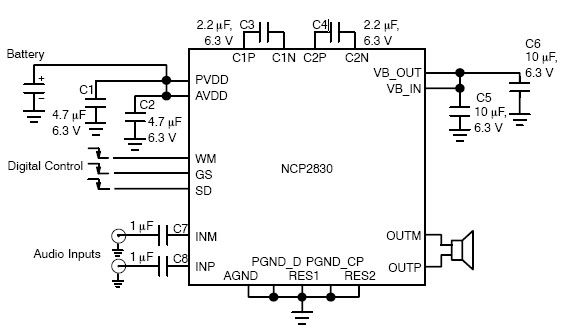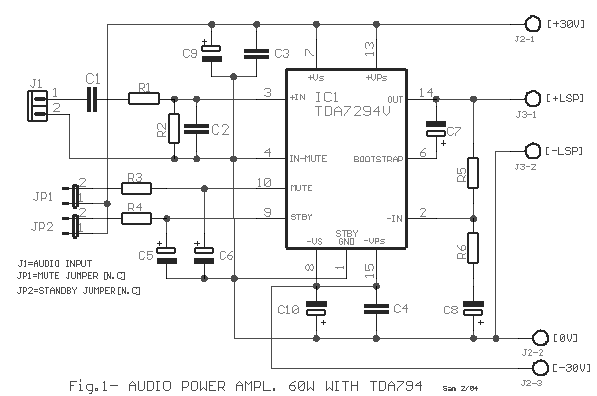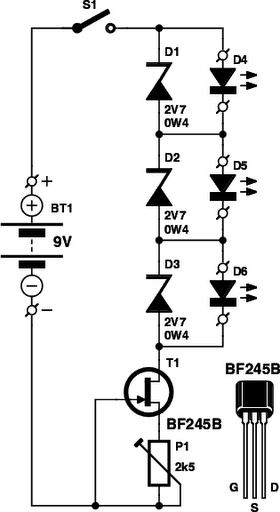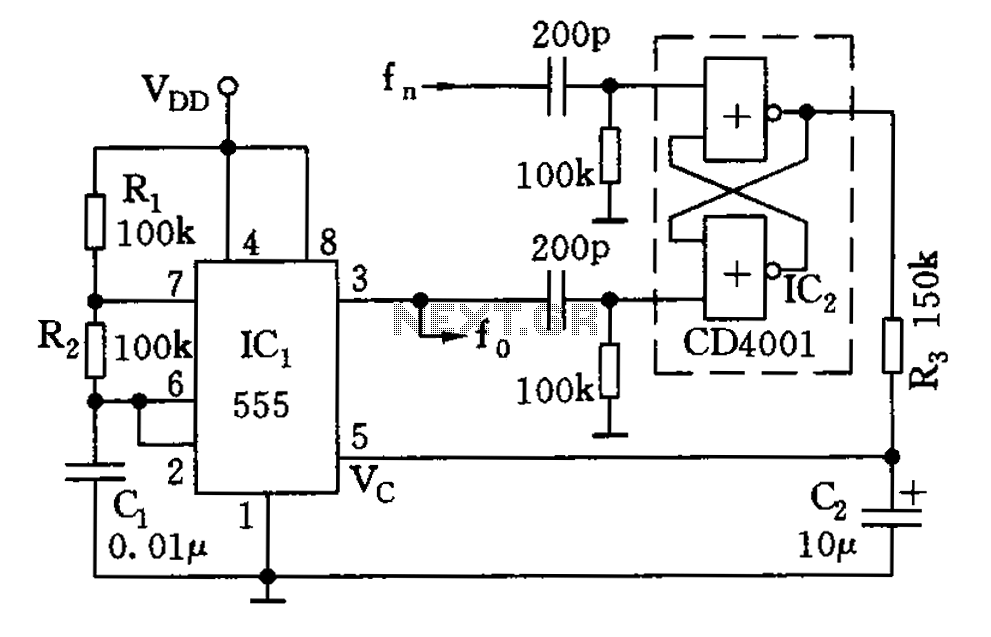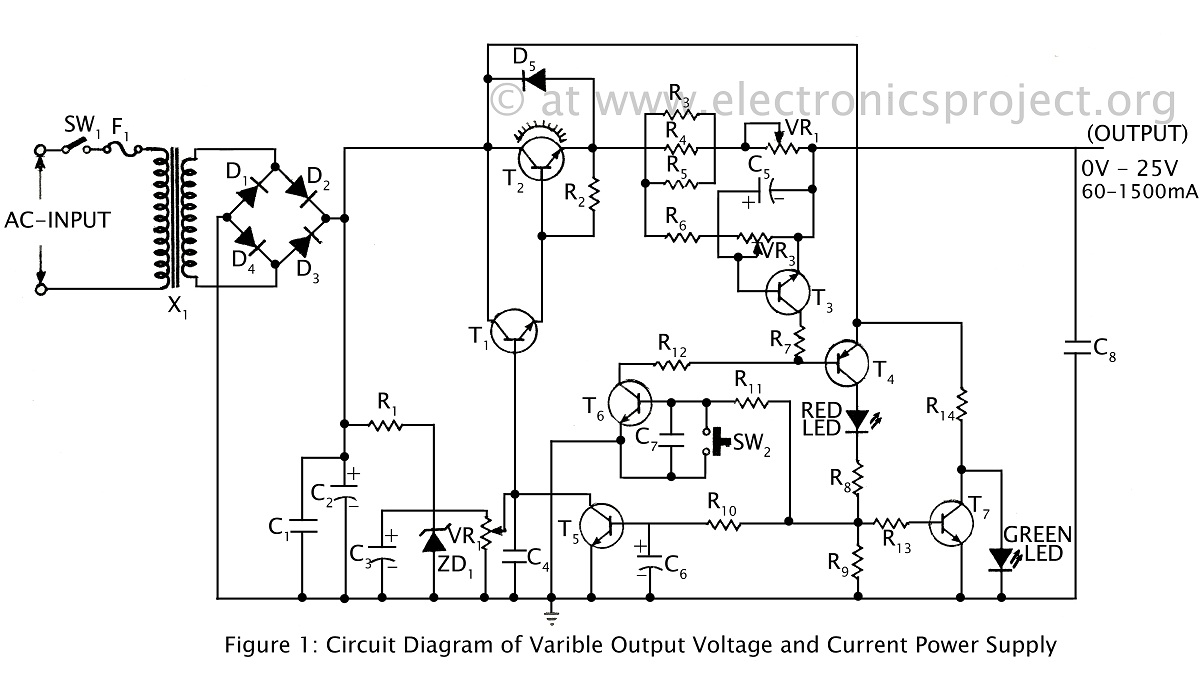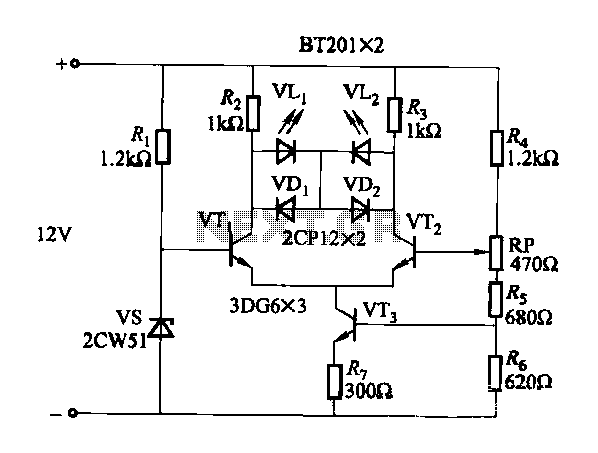
Electric oven circuit
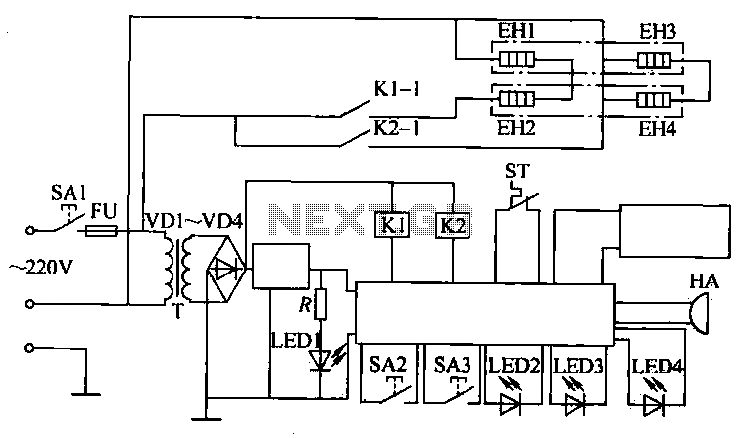
The circuit operates by activating switch SA1, which powers a 220V transformer that converts AC voltage to DC through a bridge rectifier, supplying power to the computer control panel. The temperature for cooking food is set on this control panel, allowing for adjustments between high and low temperatures. The control panel also manages relays K1 and K2, which are responsible for turning the heaters EH1 to EH4 on or off. The barbecue operation can be interrupted by disconnecting switch SA1.
The circuit design begins with the activation of switch SA1, which connects the 220V AC supply to a step-down transformer. This transformer reduces the voltage to a manageable level suitable for the bridge rectifier. The bridge rectifier converts the AC voltage to pulsating DC, which is then smoothed by a filter capacitor to provide a stable DC voltage to the computer control panel.
The computer control panel includes a microcontroller or dedicated circuitry that allows the user to set the desired cooking temperature for the barbecue. This control panel may incorporate a digital display and buttons for user interaction, enabling precise temperature control. The microcontroller processes the input from the user and determines the appropriate output signals to control the relays.
Relays K1 and K2 are used to control the power supplied to the heating elements EH1 through EH4. These relays are activated or deactivated based on the microcontroller's commands, allowing for precise control over the heating elements. The relays are rated for the appropriate voltage and current to handle the load of the heaters safely.
In addition to standard operation, the circuit design includes safety features. The disconnect switch SA1 serves as a main power switch, allowing the user to completely shut off the system when not in use. This enhances safety by preventing accidental activation of the heating elements.
Overall, this circuit is designed to provide an efficient and user-friendly barbecue cooking experience, combining electrical engineering principles with practical cooking technology.Circuit principle: After turning on the switch SA1,220V transformer transformer, bridge rectifier into DC, the computer control panel power supply. Root According to the barbecue food, the computer control panel set high or low temperatures. At the same time set the relay Kl, K2 according to the control computer board, then turned on or off the heater EH1 ~ EH4. Barbecue, disconnect switch SA1 can.
The circuit design begins with the activation of switch SA1, which connects the 220V AC supply to a step-down transformer. This transformer reduces the voltage to a manageable level suitable for the bridge rectifier. The bridge rectifier converts the AC voltage to pulsating DC, which is then smoothed by a filter capacitor to provide a stable DC voltage to the computer control panel.
The computer control panel includes a microcontroller or dedicated circuitry that allows the user to set the desired cooking temperature for the barbecue. This control panel may incorporate a digital display and buttons for user interaction, enabling precise temperature control. The microcontroller processes the input from the user and determines the appropriate output signals to control the relays.
Relays K1 and K2 are used to control the power supplied to the heating elements EH1 through EH4. These relays are activated or deactivated based on the microcontroller's commands, allowing for precise control over the heating elements. The relays are rated for the appropriate voltage and current to handle the load of the heaters safely.
In addition to standard operation, the circuit design includes safety features. The disconnect switch SA1 serves as a main power switch, allowing the user to completely shut off the system when not in use. This enhances safety by preventing accidental activation of the heating elements.
Overall, this circuit is designed to provide an efficient and user-friendly barbecue cooking experience, combining electrical engineering principles with practical cooking technology.Circuit principle: After turning on the switch SA1,220V transformer transformer, bridge rectifier into DC, the computer control panel power supply. Root According to the barbecue food, the computer control panel set high or low temperatures. At the same time set the relay Kl, K2 according to the control computer board, then turned on or off the heater EH1 ~ EH4. Barbecue, disconnect switch SA1 can.
